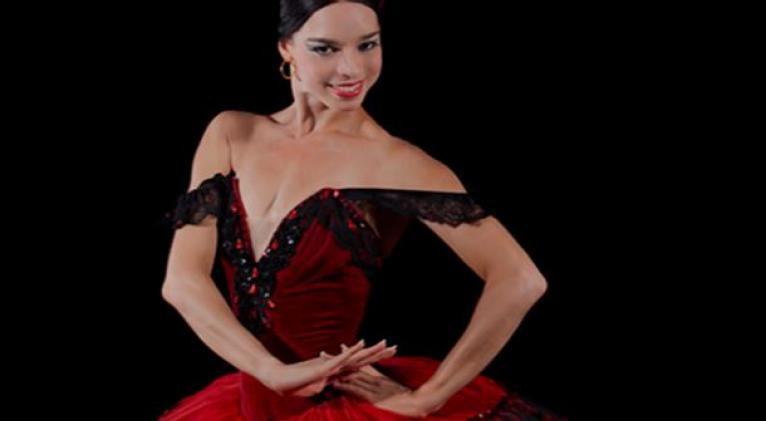A Ballet for a Nation
especiales

The National Ballet of Cuba has become cultural heritage of a nation that, thanks to large extent to the commitment and talent of the founders —Alicia, Fernando and Alberto Alonso— has been recognized with honors in the history of universal dance.
It has been, in short, an accomplishment of our culture. Fernando Alonso liked to repeat that the company was not only the result of the work of a group of people: The Ballet was founded by the people of Cuba.
That is why the gala with which the company's 75th anniversary was celebrated this Saturday was not only a tribute to tradition, it also celebrated the multiple potentialities of the future, even coexisting with the challenges of the current moment, which is not ideal.
It is hard to maintain a company like the National Ballet of Cuba, but the group is a symbol of the spiritual flow of the nation: preserving it is an inalienable vocation.
The artists who took the stage on Saturday, from the most experienced dancers to the new dancers in the cast, stands for the commitment of a country for artistic creation. The selected repertoire summed up the dialogue, plenty of universal tradition, with the contribution of the local tradition.
Today’s National Ballet of Cuba is symbol and inspiration of the stage movement of the country.
The challenges of the future
The current director of the dance company, prima ballerina Viengsay Valdés, agreed to a dialogue with CubaSí about the company’s current challenges.
—How does the National Ballet of Cuba maintain the legacy of its founders and the essence of the Cuban ballet school?
—We have aimed to dust off magnificent works from the company's repertoire that had not been performed in a long time. We have continued to make numerous attempts to enrich this repertoire, with creations of the most diverse styles and of great quality.
«We maintain the International Ballet Festivals of Havana and the collaboration with other companies and institutions in the world.
«We resume ballet performances beyond the Cuban capital and the school. The thing is that we remain eager to rescue the connection with the people of Cuba in general, which the founders began.
«We have returned to perform in several provinces of the country and we will continue scheduling national tours, despite the current material shortages.
"On the other hand, we insist on the absolute respect for the choreographic versions, paying special attention to the adaptations of Alicia Alonso's classics, whose technical, interpretive and stylistic excellence was impregnated in her proposals."
—To what extent is it possible to open oneself to new ways of taking on dance without abandoning the responsibility of preserving the classical repertoire?
—Nothing new for a ballet company. For example, for years, the Paris Opera has danced Mats Ek, Angelin Preljocaj and Alexander Ekman as well as Nureyev, Pierre Lacotte and others, much older; the Royal Ballet performs Wayne McGregor and Crystal Pite and the creations of Makarova, Ashton and MacMillan; the Bolshoi, the same…
«It is about finding a balance between historical creations and new works, with a fully contemporary conception.
«For a long time, the National Ballet of Cuba was criticized for living stuck in a classical style, practically without deviating from that pattern —the international press always pointed it out as a weakness—, while the rest of the companies developed their artists in a diversity of styles.
«I found myself facing this reality more than once, when I received numerous invitations to international galas and festivals. When I analyzed the programs, the only dancer who was dancing two classic pas de deux was me, the rest signed up with a classic and a contemporary or a neoclassical.
It was time for the National Ballet of Cuba to open up to new ways of assuming dance, without ignoring the responsibility of preserving the classical repertoire. Other companies have done the same, each with their own style, choreographers, signature.
"We have our own identity, which is our pride, but evolution is natural in human beings, and in the case of the dancer, the goal is to diversify his or her skills in both classical and contemporary roles."
—In the midst of the present shortage, why should we defend the existence of a company like the National Ballet in Cuba?
—Because the Cuban ballet is an expression of Cuban culture, of the Cuban way of moving, of the characteristics of this mestizo people, their passions and idiosyncrasies.
«Because Alicia, Fernando and Alberto Alonso coined all that and more on this wonderful project, and they coined it equally in teaching and choreographic creation.
«Cuba has a privilege in this company, since it is one of the great exponents of its culture. Its international recognition has brought many of the greatest exponents of world dance here.
«Our history can no longer be written without mentioning this company, its founders and generations of great artists and teachers, who have been and continue to be references worldwide.
«Giving up the existence of the National Ballet of Cuba would be like abandoning the cultural essence of our heritage, a key to understanding and admiring our people.
«Nor can we ignore the great challenges we face: continue training the new generation of young dancers, instilling in them a sense of belonging and commitment to the legacy of their founders.
«It is becoming aware of the responsibility that we must all assume. Responsibility and pride.”
Translated by Sergio A. Paneque Díaz / CubaSí Translation Staff














Add new comment